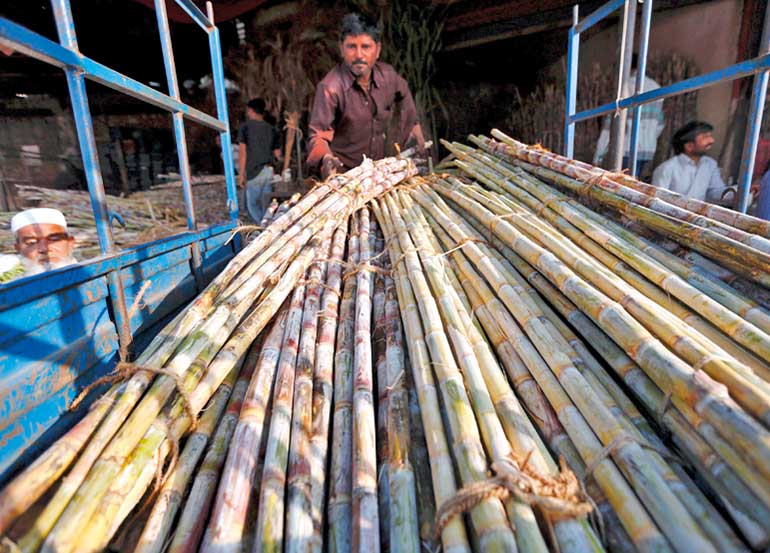Tuesday Nov 26, 2024
Tuesday Nov 26, 2024
Monday, 9 May 2016 00:00 - - {{hitsCtrl.values.hits}}

Reuters: India will soon scrap an order that requires sugar mills to export excess supply, two government officials said on Monday, after back-to-back droughts look set to turn the country into a net importer next season and open the door to rival suppliers.
Late last year the government asked mills to export as much as 3.2 million tons to deal with what was then a glut that dragged prices down and put mills under financial pressure.
To support the scheme and relieve that pressure, New Delhi agreed to pay farmers 45 rupees for every ton of sugar cane they produced, representing about two% of the costs incurred by mills.
When the compulsory export order is revoked, those direct payments would also cease, said the officials, who spoke on condition of anonymity because the decision has not been formally announced yet.
“We’ll soon take the order back, because we no longer need to export,” said one of the officials. “That was aimed at bringing our stock levels down to support prices that had nosedived.”
When asked about the timing of the move, the second official added: “It may take a few weeks”.
The officials said the decision to stop paying farmers under the scheme was made easier by the fact that the cane crushing season was coming to an end, and higher local sugar prices meant mills would have more money available to pay them.
Out of the 3.2 million ton export target, mills had sold around 1.5 million tons on to world markets.
Without the production subsidy, Indian mills are expected to struggle to export profitably, potentially boosting global sugar prices and allowing rival suppliers like Brazil, Thailand and Pakistan to increase their shipments.
Indian domestic sugar prices have jumped 40% since the current season began on Oct. 1, 2015, partly in anticipation of a drop of more than 14% in sugar output for the season beginning October 2016.
The El Nino weather phenomenon, which brings dry conditions to many regions, has stoked the worst drought in decades in some parts of India, with thousands of small-scale sugar cane growers in Maharashtra state failing to cultivate crops for the next marketing year.
Lower output in India will add to a widening global deficit, which has already pushed international sugar prices up by 23% since October.
Commodities house Czarnikow last month revised up its 2015/16 global sugar deficit forecast to 11.4 million tons from an earlier estimate of 8.2 million tons.
Indian sugar stocks on Oct. 1, 2016, when the new season begins, are now forecast to touch a five-year low of 7.3 million tons, down about 19% year-on-year.
However, some experts question India’s sudden swing into deficit from a surplus late in 2015, when mills and the government were discussing ways to trim high stocks and boost local prices.
“For me it’s hard to believe that we’ve veered from large surpluses that were a major concern only a few months ago,” said a New Delhi-based trader, who did not wish to be named.
Stung by rising prices of sugar, Prime Minister Narendra Modi’s cabinet last week imposed limits on the quantity of the commodity that traders and big users like confectioners and soft drink makers can keep.
In a key test of his popularity next year, Modi’s Bharatiya Janata Party is preparing to contest local elections in Uttar Pradesh, India’s biggest cane producing state.
“Due to a production shortfall, prices could jump in a big way next year. That’s why it makes sense to discourage exports now,” said Ashok Jain, president of the Bombay Sugar Merchants Association.